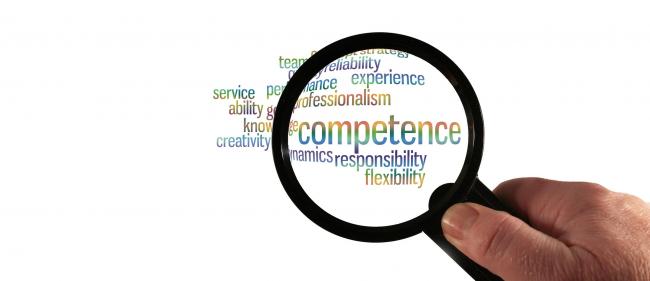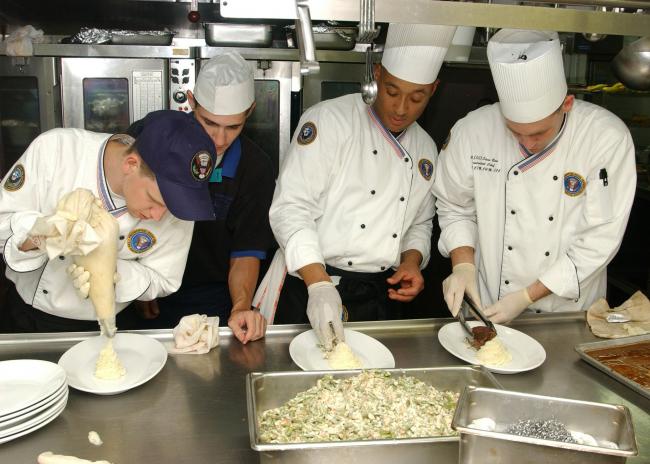Toolbox
This toolkit includes 3 types of resources:
1. Knowledge (to provide selective and concise information on the context or key concepts related to refugee integration).
2. Methods (processes that can be implemented to improve refugees' access to employment).
3. Tools (which support the chosen methods or which can be used separately for training and job coaching).
There are 3 possibilities to find the resources you need:
1. By browsing this page you will get an overview of all the resources available.
2. By using the search bar with keywords.
3. By selecting filters: What is the purpose of the resource? What is the main topic covered? Who will use it?
Filter the results using the buttons below ↓
Knowledge

- To make managers aware of the importance of intercultural communication.
- To provide examples of intercultural communication activities.

- To present the added value of refugees in a company
- To explain difficulties and barriers with recommendations to overcome them

- To describe the competence needed to work in a human environment composed of different cultures.
- To provide tips to improve this competence in action.

- To prepare people working with migrants to take into account their psychological situation.

- To explain the evolution of the methods used for teaching languages.
- Focus on the action-oriented and competence-based approaches.

- To inform managers of the added value of diversity management.
- To give the basics on how to implement diversity management in a company.

- To define the integration and social inclusion concepts.
- To analyse their consequences.

- The concept of competences and its evolution.
- Relations between training and competences.
- The various ways to define and classify competences.
Method

- Facilitate the identification of transversal skills
- Explore potential jobs having the same predominance of skills

- To assess soft skills on the workplace
- To think about solutions to improve them

- To help companies to determine needs in terms of skills
- Preparing refugees and matching them with companies
- Supporting refugees once they are in the company for a sustainable job

- To show how it is possible to organise group training sessions focused on language and communication at the workplace.
- To give an example of process that can be adapted to other companies.

- To provide companies with tools to measure the impact of refugees and newcomers.

- To prepare companies to welcome staff of foreign origin
- To inform companies about the diversity of migrants (according to their status, level, origin...)

- To facilitate the act of learning.
- To develop the key competence "Learning to learn".

- To learn the language of the host country through outdoor activities.
- To get to know about the local area and the services offered while learning the language.

- To provide quantifiable qualification requirements through the creation of a point system reflecting company’s professional standards.
- To implemente a measurement tool that visualizes the distance of the participant to the labor market.
- To gamify the path to employment.

- To organise the space to welcome learners with different levels.
- To manage individual learning paths.

- To explain the added value of video CV.
- To provide guidelines to produce an effective video CV.

- To take into account expectations and priorities of refugees and newcomers towards employment.

- To guide professionals and volunteers to take into account the background of refugees and newcomers.

- To preparing an effective learning environment.
- To prepare to manage the diversity of levels.

- To raise awareness on what needs to be taken into account to prepare the welcome of refugees and newcomers.
- To give practical tips at organisational level.

- To engaging migrants in self-directed learning.
- To support self-directed learning.

- To take into account the pre-migratory experience and the migration path.
- To lead a story telling session.

- To explain social coaching and the challenges.
- To define the position of the social coacher.
Tool

- To guide the counsellor in the exploration of transversal skills through conversation
- To explore the experience, knowledge, values and beliefs of the newcomer

- To map and measure the relevance of our social network in the job search.
- To involve our network in the job search

- To understand the concrete expectations related to soft skills independently from the cultural interpretations.

- Verify the requirements and skills needed to work in the construction sector as plasterer.
- Follow the development of practical skills in a work situation.

- Verify the requirements and skills needed to work in a wharehouse.
- Follow the development of practical skills in a work situation.

- Verify the requirements and skills needed to be a mechanic in a garage.
- Follow the development of practical skills in a work situation.

- Verify the requirements and skills needed to work as a green space worker.
- Follow the development of practical skills in a work situation.

- Verify the requirements and skills needed to drive passengers.
- Follow the development of practical skills in a work situation.

- Verify the requirements and skills needed to be a care assistant or home help.
- Follow the development of practical skills in a work situation.

- Check the prerequisites and attitudes required for working as a Pastry Chef.
- To monitor the development of practical skills during a work placement associated with training.

- Check the prerequisites and attitudes required for working as a Pasta Maker.
- To monitor the development of practical skills during a work placement associated with training.

- Check the prerequisites and attitudes required for working as an import-export employee.
- To monitor the development of practical skills during a work placement associated with training.

- Check the prerequisites and attitudes required for employment as Dishwasher.
- To monitor the development of practical skills during a work placement associated with training.

- Check the prerequisites and attitudes required for employment as Cleaning Worker.
- To monitor the development of practical skills during a work placement associated with training.

- Check the prerequisites and attitudes required for employment as Bread Maker.
- To monitor the development of practical skills during a work placement associated with training.

- Check the prerequisites and attitudes required for employment as Chef Assistant.
- To monitor the development of practical skills during a work placement associated with training.

- Check the prerequisites and attitudes required for employment as Shop Assistant.
- To monitor the development of practical skills during a work placement associated with training.

- Check the prerequisites and attitudes required for employment as Seamstress.
- To monitor the development of practical skills during a work placement associated with training.

- Check the prerequisites and attitudes required for employment as Bricklayer.
- To monitor the development of practical skills during a work placement associated with training.

- Check the prerequisites and attitudes required for employment as Housekeeping Attendant.
- To monitor the development of practical skills during a work placement associated with training.

- To be aware of opportunities and risks
- To assess the strengths of the company and areas of improvement

- To equip volunteers providing language support for adult refugees.
- To help the refugee to identify and valorise skills and competences.

- To support the advisor in the analysis of the experience of the refugee.
- To organise the presentation of skills and expectations.

- To evaluate how the refugee, newcomer is adapting to the company.

- To help the mentor preparing the first meeting with the refugee.

- To prepare tutors in the company to support effectively the refugee.
- To prepare them to provide adequate language support.

- To describe the various responsibilities for a proper integration
- To provide a checklist for welcoming a refugee

- To assess if the adaptation to the workplace is going well.

- To prepare to talk about one's working life during a job interview.

- To prepare the company for the assessment of refugees job applications.
- To develop awareness of the main risks encountered when assessing a refugee's application.
- To propose actions to limit these risks.

- To show that it can be valuable to employ a worker with a poor command of the host country language.
- To give arguments that can be used to encourage companies to employ a worker who still needs to develop language skills.

- To facilitating the self-presentation of refugees.
- To take into account the experience of refugees

- To understand what is possible for the future.
- To define the further steps to fill the gap in order to achieve the general goal.

- To help migrants to identify basics to keep in mind during a job interview.

- To explore thinking with migrants in search of job.
- To widen the choice of potential jobs.

- To identify key employability skills.
- To evaluate the distance towards their mastering.
- To plan the actions to implement.

- To provide refugees and newcomers with a navigation tool for future learning.
- To transfer learning output into applicable praxis.

- To prepare professionals to support migrants facing psychological, cognitive and behavioural difficulties.

- To show how it is possible to take into account pre-migratory experience and the migration path.
- To explain how to run a storytelling session.

















